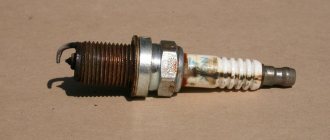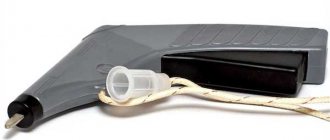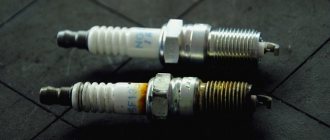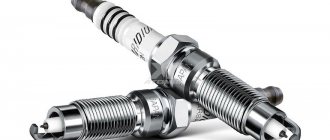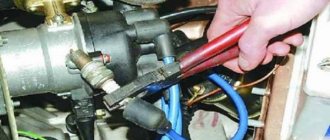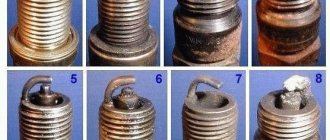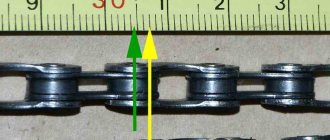After purchasing a car, the question arises - when to change spark plugs correctly - according to their actual wear or within the period recommended by the manufacturer of the car or spark plugs. Sometimes the need for replacement arises much earlier than the recommended period, and sometimes vice versa, the engine is running normally, but the recommended period for replacing the spark plugs has long passed. If an unscheduled replacement certainly won’t do any harm, then you are interested in the consequences if you do not change the spark plugs within the specified (recommended) time frame.
There are many factors that affect how long your car can run on one set of spark plugs without needing replacement. This includes the driving style, the brand and quality of the fuel that is used, the brand and manufacturer of the spark plugs themselves, and the general condition of the car’s engine. Replacing spark plugs is a simple procedure that any beginner can do, and new spark plugs are not very expensive. However, you must be able to determine when spark plugs or high-voltage wires need to be replaced so that the engine is always in excellent condition. New spark plugs keep your engine running optimally and efficiently. The car engine, during each operating cycle, produces ignition at the right time to ignite the working mixture. This mixture is ignited using an electrical discharge of several thousand or tens of thousands of volts, which occurs between the electrodes of the spark plug. But if problems appear in the ignition, this will affect the engine power and the amount of fuel evaporation from the engine that is not burned.
New cars are equipped with an on-board computer that prompts the driver using the Check Engine indicator on the dashboard, which indicates problems with the car's engine. To reduce engine misfire and maintain peak performance, it is important to replace your spark plugs when they are just starting to wear out. Spark plug manufacturers determine the service life depending on the materials from which the electrodes are made. So, for classic spark plugs, the average service life is no more than 50 thousand kilometers (30-35 thousand km). For platinum and iridium - no more than 90 thousand kilometers. Naturally, these figures can be adjusted depending, for example, on the quality of gasoline that is poured into the car and the condition of the engine itself.
A typical spark plug consists of several components:
- Contact terminal - designed to connect the spark plug to the high-voltage wires of the ignition system or directly to the ignition coil;
- Insulator – protects the spark plug from overheating; the part of the insulator directly adjacent to the central electrode most strongly affects the quality of the spark plug;
- Insulator ribs - prevent electrical breakdown along its surface;
- Central and side electrodes - a spark appears between them, which ignites the fuel-air mixture in the cylinder;
- O-ring - designed to prevent the penetration of hot gases from the combustion chamber.
The main signs of faulty spark plugs:
- Difficulty starting the engine (the starter fires, but the engine does not start or starts after using the starter for a long time)
- the engine “troits” (it jerks when driving, especially noticeable at idle, power and traction are reduced)
- increased fuel consumption
- increased CO in exhaust gases
- engine dynamics are deteriorated (the engine develops speed poorly and, accordingly, its power decreases)
One of the sad consequences of faulty spark plugs can be detonation in the engine combustion chamber. As a result of the detonation of a certain volume of the mixture, a shock wave arises, which, depending on the volume of the mixture, can have such an intensity that its energy will cause the entire charge remaining in the cylinder to detonate. When shock waves are reflected from the wall of the combustion chamber, a ringing metallic sound is produced. With severe detonation, the knocking becomes louder, engine power drops, and black smoke appears in the exhaust gases. Also, during severe detonation, the engine experiences large thermal and mechanical loads on the piston, connecting rod and crankshaft. The edges of the pistons and cylinder head gaskets and spark plug electrodes can burn. Shock waves destroy the oil film in the upper part of the cylinder, thereby causing increased wear.
What types of candles are there?
Conventional single-electrode spark plugs were used for a long time. In principle, they are the most common today. But progress does not stand still and now new, fashionable, strong and expensive platinum ones have appeared, and even with several electrodes in the center or on the side.
Platinum one-electrode spark plugs Two-electrode platinum spark plug Three-electrode Four-electrode
The difference is a special surfacing, which contains this expensive metal. Sometimes the central electrode itself is made of a platinum alloy, which is more resistant to corrosion and chemical damage than a chromium-nickel alloy. Price accordingly. Such candles have lower glow ignition characteristics. At the same time, the service life increases almost three times. For those who are not in the know, glow ignition is a process that cannot be controlled; it occurs due to the ignition of the working mixture from the hot parts of the spark plug. Several electrodes are made just to increase the service life of the spark plug. If you think that a spark appears between all the electrodes at once, then you are mistaken. Between two, as soon as the surface of one of them becomes clogged, the next electrode is switched on, to which it is easier for the electric current to break through (where there is less resistance). Multi-electrode spark plugs last longer, but worsen combustion efficiency due to the masking of the ignition source in the combustion chamber by these additional electrodes, which means that the efficiency of the engine with such spark plugs is lower. In addition, additional side electrodes intensively absorb heat, making the spark plug “cooler”. Climate and operating conditions also play a big role in reducing the service life of spark plugs.
How to choose the right spark plug?
First of all, open the instructions for your car. It must indicate the type of recommended candle or its equivalent. Well, if there isn’t one, then we select the spark plug according to the heat number, which should be closest to the one that the “original” spark plug has on the engine of your car. The heat number is a value that shows the time after which the candle will reach the glow state. The higher the heat value, the less the candle heats up. Accordingly, with a low heat rating there will be a “hot” candle, and with a high heat rating there will be a “cold” one. At light loads, “hot” spark plugs work great, but with prolonged and intense operation, the spark plug’s temperature increases, which can lead to “hot” ignition. The result is a loss of engine power. The spark plug must be replaced, specifying the thermal characteristics and eliminating all faults. It is possible to avoid glow ignition, you just need to follow a few simple rules: first, we do not allow early installation of the ignition; secondly, fill in the fuel appropriate for the given engine; and thirdly, we monitor the appearance of the candle.
How do you know when to use a particular candle? It must be borne in mind that the operating conditions of candles in summer and winter are different, the conclusion follows - it is best to have two sets of candles: a summer one with “cold” ones and a winter one with “hot” ones. If you drive in winter and often get stuck in traffic jams, then it is best to set the spark plugs hotter, but if in the summer you drive at high speeds, and even over long distances, then, of course, set them colder. For long distances and high speeds - “cold” spark plugs, and for short distances and at low speeds – “hot” spark plugs. The choice of spark plug is also influenced by the size of the engine; the larger it is, the “colder” the spark plug. The same spark plug may be “cold” for one engine and “hot” for another. How much the candle will heat up during operation, and how it will give off heat, also depends on the insulator material and the length of the heat cone.
A spark plug is a guarantee of efficient engine operation.
Such a small engine part can negatively affect the operation of the entire power plant. Thanks to them, the fuel mixture ignites in the engine cylinders. Ignition occurs from a spark that is generated at the electrodes of the spark plug. A high voltage is applied to the electrodes and a breakdown of the gap between the electrodes occurs. The presence of carbon deposits on the products impairs the operation of the mechanism, causing the engine to lose power and operate unstably.
When to change spark plugs? And why?
For proper operation of the vehicle's power plant, it is necessary to change these products at certain intervals. The level of their work is influenced by the following factors:
- low-quality gasoline;
- poor engine condition.
Due to these negative factors, carbon deposits form on the devices and, as a result, ignition of the fuel mixture becomes difficult. Moreover, due to dirt, the ceramic jacket can be damaged and the unit may completely collapse.
Carbon deposits on spark plugs
Since low-quality fuel is common in our country, the service life of spark plugs is reduced several times; the unit replacement procedure must be carried out every 20-30 thousand kilometers. Of course, many motorists can boast of more impressive periods, for example, 50-100 thousand mileage, but such “sacrifices” are not at all necessary for the car.
Yes, but what will happen if you don’t change the spark plugs? Multiple problems will arise in the operation of the entire mechanism:
- the car will begin to twitch while driving;
- engine dynamics will decrease several times;
- fuel consumption will increase;
- You can damage various engine systems and disable the entire mechanism.
Important! In order to understand when you need to change your spark plugs, you need to check them periodically. Yes, sometimes it is not so easy, but if you have a simple four-cylinder engine, the spark plugs can be removed very simply. A visual inspection can determine the degree of contamination and take preventive measures to eliminate debris and soot.
Companies that produce these products recommend replacing them every 15,000 km. But with good fuel and proper operation of the power plant, the spark plugs can last longer.
Origin of red plaque
This phenomenon is less common than the effects described above. Why are there red electrodes on some spark plugs?
- the tank is filled with low quality gasoline with additives that increase the octane number;
- a car enthusiast or a fuel supplier adds additives to gasoline, which contain a large amount of metals;
- the owner of the car installed spark plugs in the cylinders that did not match the heat rating.
The reasons for the reddish tint of spark plugs do not pose a direct threat to the power unit, but are harmful in the long term. Driving on low-quality gasoline with unknown additives a priori accelerates the wear of parts and components. Plus an increase in consumption arising from worsening combustion conditions of the mixture in the cylinders.
We recommend: Central locking on the VAZ 2110: design and principle of operation
Operating a car with spark plugs that are “cooler” or “hotter” in terms of heat rating reduces engine power and significantly shortens the life of the elements. A characteristic sign of incorrectly selected spark plugs is a drop in crankshaft speed at idle and missed ignition cycles.
How to visually determine the condition of a spark plug?
If the car starts to shake, extraneous sounds and vibration appear, the condition of the device should be assessed.
- Determine the electrode gap, its size and carbon deposit level. A large gap indicates that the car has traveled a sufficient amount of mileage and requires replacing the spark plugs. If there is heavy carbon deposits, then fuel combustion is ineffective.
- Various damage to the product body indicates that these devices need to be replaced urgently.
This is necessary and important to know
Due to their design features, the spark plugs are located inside the engine, and therefore their level of wear cannot be determined without removal. When replacing them, you must remember to install all products at the same time.
Another condition is that the products must be from the same manufacturer. When purchasing them, you should give preference to well-known brands and brands. Some of the best companies are in Germany and Japan.
You can determine how often you need to change spark plugs by looking at the ceramic insulator; it may have chips and cracks, and there may be a brown coating inside that will interfere with the proper functioning of the unit. Carbon deposits occur when using low-quality fuel. In this case, it is better to immediately replace the old products with new ones.
Advice! To check the condition of the devices, they must be unscrewed from the socket. This operation is performed using a special key with the cooled engine not running. If the spark plug is faulty, it is very easy to determine visually. Soot is visible on it, the spark plug is wet and yellow spots are visible on the electrodes.
Before replacing products, the hole into which the spark plug is inserted should be cleaned of contamination. This is done to prevent foreign particles of debris from entering the engine cylinder.
After this, the device is inserted into the seat and tightened. This must be done carefully, since with too much force you can damage both the thread and the candle jacket itself.
Currently, manufacturers produce several types of candles, which can be divided into two groups:
Multi-electrode spark plugs
Multi-electrode ones have a longer service life than two-electrode ones; they allow the ignition system to function for a long time and reliably, up to 50 thousand kilometers. But two-electrode ones are not so reliable - if the working electrode fails, the product immediately becomes unusable.
Attention! Before replacing spark plugs, you should carefully study the requirements set by the car company, according to the instrument operating book. Be careful when working with car devices yourself!
WHAT ARE CAR CANDLES
A spark plug is a small part of a car engine that creates an electric spark that ignites the fuel-air mixture. Using a spark, it creates a mini-explosion in the cylinder, due to which the piston begins its movement. The number of such mini-fuzes in the engine is determined by the number of cylinders. Ordinary business class cars, and in particular VAZ 2114 cars, have four-cylinder engines, which means there are 4 units installed in it. But there are elite class cars or sports cars. They have six- to eight-cylinder internal combustion engines, respectively, 6-8 pieces are installed.
Let's look at the spark plugs for the VAZ Samara. As mentioned above, 4 pieces are installed in the VAZ internal combustion engine. Each consists of a nickel housing, a contact rod protected by a ceramic insulator. A spark occurs when the central and side electrodes come together.
It is important that all 4 candles work synchronously, which means they must be from the same manufacturer and the same brand, that is, from the same materials. It is not advisable to replace one or two spark plugs. If it’s time to change, then it’s better to have all 4 at once.
Recommendations for extending the life of products
To extend the service life you just need:
- It is necessary to refuel with high-quality fuel, and therefore you should not use the services of dubious gas stations, regardless of the cost of fuel.
- Constantly monitor the oil level in the vehicle unit.
- Purchase original products according to the individual characteristics of the car.
- Regularly clean the device from carbon deposits and other contaminants.
- Pass technical inspections in a timely manner and monitor the operation of all vehicle mechanisms.
Remember that timely replacement of spark plugs will guarantee reliable operation of the machine’s power plant and protect against unpleasant surprises. Only high-quality factory spark plugs will give the car enthusiast an easy running of the car and will increase the service life of these products several times.
Not every motorist knows that spark plugs are important; we’ll look at them in this article. We will also tell you how to understand that it is time to change the spark plugs, as well as how to do it correctly.
Table of contents:
General information
Motorists are not always able to purchase exactly the spark plugs recommended by the manufacturer. As a result, many candles stop working much earlier than expected, and this is fraught with serious consequences.
If one spark plug breaks, this can already provoke engine detonation. If it does not cause the death of the engine, then the spark plug must be replaced, and it is also advisable to carry out a full diagnostic of the engine.
How to understand that spark plugs need to be replaced
There are a large number of signs that indicate that the spark plugs should be replaced with new ones. You should be aware that at the moment a spark appears between the electrodes, the temperature is enormous; with prolonged use, this leads to wear of the spark plugs.
Old and new spark plugs
Here are the main signs that may indicate a problem with the spark plugs:
- You have completely stopped feeling the dynamics of car acceleration.
- Fuel consumption has increased noticeably over the last period of time.
- After the first turn of the key, the car refuses to start, and you have to make several attempts.
If we consider the signs in general, they can also indicate problems in other systems, so we need to understand them in more detail. That is why, in order to find out whether there are problems in the spark plugs, they need to be unscrewed and inspected.
Checking the spark plugs
Unscrewing the spark plugs must be done under the roof, otherwise if you do it outside, rain, snow or debris may get into the cylinders. To unscrew the spark plugs you will need a regular spark plug wrench.
Carefully unscrew the spark plug, but not all the way, then it is better to use a compressor, this way you will blow out the wells and remove dust or other particles from them. Then it will be possible to completely unscrew the spark plug and carefully inspect it.
Old spark plug
The presence of heavy carbon deposits on the spark plug indicates that it needs to be replaced urgently, since the gap has decreased, and this is not good. Also, if the electrodes have melted , then you definitely need to change the spark plug. If the ceramic insulating part has cracks , then such a spark plug also cannot be inserted back into the engine.
Cracked ceramic spark plug insulator
When you find at least one defect from the above, you need to replace the spark plug without hesitation. Therefore, we quickly go to the store and buy candles, their cost is relatively small.
If you cannot start the engine on the first try, then this indicates that there is a gap in the ignition. This tells us that we need to find the cause - it could be burnt high-voltage wires or burnt spark plugs.
If the spark plug stops working, a combustible mixture begins to accumulate in the cylinder. In the future, this will lead to this mixture getting into the catalyst, and for this reason its service life will be significantly reduced. The engine does not need regular replacement of spark plugs, so it is better to buy high-quality spark plugs right away, preferably those that have proven themselves well.
Purpose and design of spark plugs
Automotive spark plugs are designed to ignite the fuel-air mixture in the combustion chamber of an internal combustion engine by producing a spark.
The design of automobile spark plugs is quite simple; it has remained virtually unchanged since 1902, the time of its invention by the famous German engineer Bosch. The main components of a candle are:
- contact pin;
- central electrode;
- side electrode;
- insulator;
- threaded metal frame (body);
- seals.
The spark plug works as follows: high voltage from the car's ignition coil is supplied at strictly defined points in time through the contact terminal of the spark plug to its central electrode. An electrical discharge occurs in the gap between the central and side electrodes, accompanied by sparking. It is, in fact, at this moment that the air-fuel mixture ignites in the engine combustion chamber.
This process is very clearly demonstrated in the animated and video materials of the article Design and principle of operation of the internal combustion engine.
It would seem that everything is simple: two electrodes and high voltage, but the difficulties lie in the technological nuances. The specificity of the operation of a spark plug is not only that it occurs using high-voltage equipment, but also that complex high-temperature transient processes occur both in the spark plug itself and in the environment (in other words, sharp changes in high temperatures). All these processes determine the choice and use of materials in its production.
We recommend: Pneumatic braking system for tractors and trailers. Design
Thus, the insulator, which serves to prevent breakdown of the high voltage supplied to the contact wire to the body parts (ground) of the engine, is made of high-strength technical ceramics. In addition to this function, the insulator performs the function of dissipating heat to the cylinder head.
Leakage currents are always present in high-voltage electrical circuits. Ring ribs on the outer surface of the insulator serve to increase resistance to leakage currents: they lengthen their path to the housing parts.
A high-voltage discharge is a source of radio interference for audio equipment turned on in the car. To suppress interference in some types of spark plugs, a resistor is installed in the middle part of the contact wire - a conductive mass made of glass material.
The contact terminal is usually made of a nickel alloy, and some manufacturers also contain a copper core for heat dissipation.
The same task - heat removal during operation - is performed by a metal body with a thread cut on it, and the external sealing ring, in addition to preventing the breakthrough of combustion products, also compensates for the difference in thermal conductivity of the cylinder head and the spark plug body.
How often should you change spark plugs?
Find and carefully review the owner's manual for your car; it will describe in great detail how often to change and what spark plugs the manufacturer suggests. If you follow the manufacturers' advice, your car will last much longer and be in perfect condition.
Frequency of replacing spark plugs on Toyota Corolla
Adhere to the regularity of replacing spark plugs as indicated in the manual.
On average, it is recommended to replace conventional spark plugs every 20-30 thousand km, and platinum and iridium spark plugs once every 100 thousand km.
Most often, after short trips, most of the soot remains on the spark plugs, the reason lies in the fact that the engine does not warm up fully. That is why, at least once a week, warm up the engine at idle speed, this will self-clean itself from carbon deposits. This procedure will have a positive effect on the performance and duration of the candles.
Main types of automotive spark plugs
Conventionally, the entire variety of spark plugs can be divided into three classes:
- Traditional two-electrode ones - their design is described in detail above - are the most common class;
- Multielectrode - in terms of scope of application they are inferior to traditional ones. However, they are quite popular among car enthusiasts;
- Torch and pre-chamber (or plasma-pre-chamber) - were first used in sports cars, and then in ordinary passenger cars, but their scope is currently limited by the level of confidence of motorists.
Even minor design changes seriously affect the performance of traditional two-electrode spark plugs. For example, on some models, a V-shaped notch is made on the surface of the central electrode or a U-shaped recess on the surface of the side electrode. Of course, these changes do not extend the life of the spark plug, but they do help increase the sparking area. In some types of engines, spark plugs with an elongated central electrode are used to improve the spark formation process.
Two-electrode spark plugs
In a large class of traditional two-electrode spark plugs, two subclasses are usually distinguished:
- Spark plugs in which the central electrode is made of homogeneous metal;
- Bimetallic - a coating of another metal is applied to the working surface of the central electrode, which improves the characteristics of the spark plug.
The main advantages of traditional candles are price and time-tested reliability.
We recommend: How does an internal combustion engine work and how does it work?
The main disadvantages are limited service life, unstable spark formation parameters, low efficiency under cold engine start conditions.
The use of bimetallic compounds has become the main direction in improving two-electrode spark plugs. First of all, the changes affected the material of the core of the electrodes: if the material of homogeneous electrodes was nickel-containing steel, then the core of the new electrodes began to be made of copper.
This technology made it possible to improve heat removal from the working surface of the central electrode and, as a result, reduce the intensity of electrical erosion processes, and therefore increase the service life of the spark plug. This technology has improved the anti-carbon properties of the side electrode.
The next stage in the use of bimetallic compounds was the use of noble metals in the central electrode material: iridium and platinum (or rather, their alloys). platinum and iridium spark plugs appeared .
Iridium has high refractoriness (transition temperature to the liquid state is 2450°C) and increased resistance to electrochemical corrosion. Thanks to these properties, engineers were able to not only dramatically increase the durability of spark plugs, but also improve other characteristics. The fact is that due to the increased strength, it was possible to sharply (several times) reduce the diameter of the central electrode (to 0.4 mm), which in turn reduced the sparking voltage and increased its efficiency.
Platinum spark plugs also have characteristics similar to iridium ones. The main and, perhaps, the only drawback of platinum and iridium spark plugs is their high price. Perhaps maintenance can also be included here: while conventional candles can be mechanically cleaned of carbon deposits, platinum and iridium elements must be treated with much more care.
Multi-electrode spark plugs
In multi-electrode spark plugs, there are several side electrodes and they are usually located in a circle around the central electrode.
Sparking between the central and one of the side electrodes occurs randomly, and if any side electrode fails, its functions are “transferred” to the adjacent electrode. The main advantage of such spark plugs is a reduction in the load on the single side electrode compared to a traditional circuit and, accordingly, an increased service life compared to a two-electrode analogue.
In addition, in a two-electrode spark plug, the side electrode, due to its asymmetrical location (relative to the central electrode), screens part of the space behind it. Because of this, the spark formation zone is also asymmetrical with respect to the axis of the spark plug. With a multi-electrode design, this does not happen, and the fuel is burned more efficiently.
The main disadvantages of multi-electrode spark plugs are their relatively high cost and longer recovery (drying) time after cold starts.
Prechamber spark plugs
In prechamber spark plugs, the space around the central electrode is shaped like a rocket engine nozzle.
The high-voltage discharge between the electrodes is converted into a plasma clot, which, thanks to the geometry of the interelectrode space, is “shot” into the engine cylinders along with the combustion products. In this way, volumetric ignition of the fuel is formed, which, unlike traditional (rather point-based in this terminology) ignition, ensures more efficient and complete combustion.
In practice, prechamber spark plugs showed really good results when operating at high speeds, but at lower speeds they turned out to be worse than traditional ones. In addition, they are more expensive than previous classes. Therefore, the use of pre-chamber spark plugs in mass-market passenger cars is limited both technically and economically.
A few tips for motorists
- If the spark plugs on your car were recently replaced, and suddenly one of the spark plugs fails, this situation sometimes happens. Most likely the spark plug turned out to be defective, which is why only it can be replaced. If the car already has a lot of mileage on spark plugs alone, and your spark plug burns out, then it is recommended to replace the entire set at once.
- Review the technical documentation of your car carefully. The fact is that all cars are different, and they may have individual characteristics of replacing spark plugs that you probably didn’t even know about. That is why we strongly recommend reading the manual.
- When the replacement period has already arrived, and your car’s spark plugs are in almost the same perfect condition, then you don’t have to change them. Of course, such a procedure is still recommended, but if there are no problems in the operation of the internal combustion engine, then you can not change the spark plugs and drive a few thousand kilometers more.
What happens if you don't change the spark plugs?
There are a sufficient number of scenarios according to which events will develop in the future. The first, most common option is that at one point you will not be able to start your car, and most often this happens at the most inconvenient moment. There will most likely be absolutely no signs before this, and then bam, and you can no longer start the car.
If you hear engine friction at idle, then this is a bad sign that screams that it’s time to urgently change the spark plugs. In the future, if you do not change the spark plugs, the gap between the electrodes will greatly increase, and this will increase fuel consumption. If you continue to drive the car and do not change the spark plugs, the ignition coils will simply break. The procedure for replacing coils is not that cheap, so your negligence will hit your pocket hard.
If there are defects in the operation of the internal combustion engine, then this can also affect the spark plugs. For example, if the spark plugs constantly work while completely covered in oil, this will have a bad effect on their performance. The problem in this case is that the internal combustion engine gaskets have become unusable and need to be replaced.
Sometimes the spark plug does not spark because the contact has bent slightly during operation and the gap has changed. If you are far away and there is no way to purchase candles, you can temporarily set it up on your own. To reduce the gap, you can use a vice, and to increase it, you can simply use a coin. For convenience, below is a table of gaps for the most common spark plugs.
DEFECTS AND DAMAGE TO SPARK PLUGS
During operation, damage and defects may appear on the spark plugs. Sometimes they are the result of improper operation, sometimes due to the wrong brand of spark plugs. Defects on the spark plugs can also help diagnose engine problems. What will happen if you do not change the spark plugs when defects occur, you will learn from this section of the article. The brown color of the electrodes and the absence of damage indicate that the spark plugs are operating normally and you can continue driving.
Examples of defects and description:
- The electrodes and housing are filled with oil. This defect indicates that the removable rings on the pistons are worn out and require replacement. It is the rings that allow oil to pass through, and the plugs filled with liquid spark irregularly and detonate. The engine needs to be repaired urgently. Dirty igniters must be washed from oil, dried and inspected. If there are no other defects, then they can be left for further use.
- The electrode insulation is broken . You cannot drive with chipped insulation; you need to change the spark plugs, as they cause detonation in the engine.
- Plaque on the surface of the body indicates low quality gasoline. It is necessary to change the gas station that sells the surrogate, and clean the spark plugs from deposits that prevent a spark from occurring, and you can continue to drive on them.
- Overheating of the housing is indicated by white spark plugs or a worn out upper electrode. Ignition devices can overheat for two reasons:
- You use high-octane gasoline, which means you need to change its brand;
- The type of spark plugs is not suitable for your engine and therefore they also need to be replaced.
- A lean mixture and the formation of carbon deposits inside the cylinders are indicated by the white color of the insulator with a smoky tint to the body and slightly melted electrodes.
- Painting the body and contact in a golden or glossy color, as well as mechanical damage, indicate that this brand of spark plugs is not suitable for your engine. The last defect occurs due to the excessive length of the element. Incorrectly selected, long specimens can damage the piston. Therefore, they also need to be replaced.
Degrees of wear of spark plugs
A worn spark plug is perhaps the most correct type of malfunction. It says that the ignition process was carried out correctly, the internal combustion engine is working normally, but the time has come to replace them with new ones.
How to replace spark plugs: step-by-step instructions
- Carefully remove the engine guard so you have access to the spark plug wells.
- Use a compressor to blow away dust and other particles from the engine. This is necessary to ensure that these contaminants do not end up in the engine in the future.
- Carefully remove the high-voltage wires from all spark plugs. You should grab it by the cap, otherwise you may damage the wires. Be sure to remember in what order the wires are connected; the reverse connection must be made in exactly the same way.
- Using a spark plug wrench, unscrew the spark plugs and inspect the threads that are inside the engine - there should be no cut threads there.
Replacing spark plugs on a VAZ 2114
The next step is to unscrew the spark plug using a spark plug wrench, usually a 16 or 21 socket wrench, depending on what spark plugs are installed on your car. Spark plugs are unscrewed only when the engine is stopped and cooled; if this rule is violated, there is a possibility of getting burned and damaging the threads. If even after the spark plug is “torn off” it continues to unscrew tightly, there is no need to rush, make a couple of turns in the opposite direction and try to carefully unscrew it again. This must be done so as not to damage the threads in the cylinder head under any circumstances. If the spark plug is difficult and tight to unscrew, this may be due to the fact that a large amount of soot has accumulated on its walls or rod.
So, when the spark plug is unscrewed, you can install a new, pre-prepared spark plug. Install and tighten it until your fingers begin to slip, then arm yourself with a spark plug wrench and tighten it, being vigilant and careful not to accidentally strip the thread. Excessive tightening of the spark plugs is fraught with damaged threads in the cylinder head, as well as subsequent problems with replacing spark plugs.
The final stage. After the spark plugs are screwed in, you can put the high-voltage wires in place, and then install the plastic casing in place. Tighten it and try to start the engine. The engine should start immediately, and its operation should be stable and smooth.
What factors affect the service life of spark plugs?
If you constantly drive your car short distances, then carbon deposits will gradually be deposited on the spark plugs. The reason lies in the fact that you do not fully warm up the engine, which is why there is much more carbon deposits left than if you drive a warm engine. In order to remove this deposit, you can warm it up for 10 minutes at idle, this way the spark plugs will be cleaned.
Also, the gasoline used has a huge impact on the operation of the ignition system - if it is cheap and you buy it from a neighbor, then you should not be surprised if the internal combustion engine breaks down. This deposit is due to the fact that you use low-quality fuel; it is practically not removed from the electrodes. The plaque also does not conduct electric current, which is why the power is significantly reduced.
Modern spark plugs - design, service life
Author:
Maxim Markov
Gasoline power units of cars are complex devices. Spark plugs play an important role in them. Without these elements, normal operation of the engine is impossible, since they are responsible for the formation of a spark, which ignites the fuel mixture in the combustion chamber, and it sets the piston in motion. Considering the unfavorable conditions under which spark plugs operate, the requirements for them are the most stringent, so manufacturers are trying to make them of high quality. In order for the engine to work well and not malfunction, every car enthusiast should know everything about these main elements of the car’s ignition system.
The meaning of spark plug colors
Working spark plugs have gray or brown electrodes. If the candle is a different shade, then this is a malfunction, and you should find out what's wrong. Now we will tell you in more detail what the color of the electrodes indicates:
- A small layer of black carbon deposits. Most likely not enough air is getting into the cylinders. Here you need to check the filter, also check the throttle valve and the electronic control unit. Sometimes there is a small glitch in the system, which can be fixed for you at the nearest car service center.
- Thick black coating. This indicates that the candles are constantly being filled with oil. This is a very bad sign and could possibly cause serious engine problems.
- Gray coating with a whitish tint. Lack of gasoline in the mixture. In order to understand the reason, you should check the entire fuel supply system to the cylinders.
- Reddish coating. Gasoline is of terrible quality; we strongly recommend that you change your gas station. Otherwise you will get a lot of trouble with the engine.
Signs of faulty spark plugs
An experienced driver will always distinguish an old spark plug from one that can still work for a long time. But here's what to do for beginners who are not so well versed in cars. It is for this purpose that we have prepared the main signs of an urgent replacement of spark plugs:
- The engine starts to stall. It is not difficult to recognize this symptom; the car begins to shake a little. This is as follows: one or more cylinders stop working.
- Gasoline consumption increases significantly - this can be seen by the frequency of visits to the gas station.
- The engine power has dropped - you can understand this by the rate at which the car accelerates.
This is important to know
- Spark plugs are mounted directly into the engine, which is why it is impossible to determine the degree of wear without unscrewing the spark plugs. Remember, if one spark plug fails, the entire set must be replaced.
- If you are going to check the spark plugs, you should only unscrew them using a spark plug wrench. This key has a rubberized or magnetic working area, so it will be possible to remove the spark plug from the tunnel. Remember, you can only remove the spark plugs on a cold or cooled down warm engine. If you unscrew the spark plugs while the engine is still hot, there is a chance that the spark plug will break off and some part will remain inside. This feature is associated with the expansion of bodies when heated.
- When you change spark plugs on your car for the first time, carefully read the owner's manual before doing so.
- Candles are divided into types that are made by different manufacturers in different countries, so not all candles are interchangeable. In order to understand which spark plugs you can replace your old ones with, below we will provide a useful table (clickable).
How to extend the life of candles
- Regularly, especially before long trips, it is necessary to monitor the engine oil level.
- Buy only spark plugs recommended by your vehicle manufacturer.
- Visit only trusted gas stations; do not visit suspicious gas stations with unknown gasoline. You should not buy it in places where the price is noticeably lower - in such places they use various manipulations with gasoline to dilute it. Such gasoline will not only reduce the life of the spark plugs, but can also lead to major engine overhauls.
- Periodically remove the spark plugs and remove any carbon deposits and other deposits that have appeared, sometimes in this way you can find out about problems in the car.
Remember that if you pay more attention to the condition of your car, then you can avoid all sorts of unexpected surprises.
Prevention
- To avoid replacing spark plugs frequently, watch what you put into the tank and avoid “left-handed” gas stations.
- Check the condition of the spark plugs regularly, for example, every 5 thousand km. This will save you from excessive fuel consumption and unpleasant surprises on the road, especially in winter.
- Buy a set of spark plugs and carry them with you, as they say, just in case.
- Monitor the engine oil level and condition.
- Buy only high-quality spark plugs, preferably those recommended by the manufacturer of your car, but this does not mean that others are contraindicated for you. You have the right to choose similar spark plugs, the main thing is that they match the parameters (operating temperature, heat rating, number of side electrodes, thread diameter, etc.). Leading manufacturers of spark plugs: NGK, BOSCH, Brisk, DENSO.
I have everything, I hope you will draw the right conclusions. Those who liked the article can express their gratitude in the comments. Those who didn't like it can also express disagreement. If you think that the article is incomplete, please feel free to supplement me, again using the comment form. Bye everyone, see you again at VAZ Repair. Take care of yourself and your VAZ!
There are different opinions among motorists regarding the service life of spark plugs. Some take the position that it can handle 20,000 km (and this is an average). After how many km, when should you change the spark plugs? Some are convinced that it can easily cover a hundred thousand kilometers. Experts also do not adhere to a clear verdict. And this is not surprising, since there is no specific indicator here. And the question of replacement frequency remains unresolved for many, because the service life of spark plugs varies. Replacement can be made based on the following aspects:
- terms from the company that produced the car,
- degree of wear of each part.
Let's sum it up
You need to change spark plugs according to the instructions of the company that released your car. This frequency must be adhered to, but no one is immune from force majeure circumstances. For example, if the fuel supply system becomes clogged, the spark plugs begin to work in the wrong conditions, so their service life is significantly reduced.
Also, if chips and cracks of the insulator are visible on the spark plugs, then under no circumstances should they be inserted back. A clear sign of replacement is also considered to be melting of the electrodes and large carbon deposits.
Better keep an eye on all the components of the car, in this case there will be no problems in the operation of the internal combustion engine and the spark plugs will be able to last for a very long time. In conclusion, I would like to say that you should not save money on servicing your car. Let's say you save on fuel, but in a few years this may result in a major overhaul of the engine.
Now you know everything about replacing spark plugs, how to do it correctly, and what you should pay attention to. All you have to do is go to the store and start replacing, we wish you success!
| SHARE: |
HOW TO CHANGE PLUGS IN A CAR?
Changing spark plugs in a car is not difficult; any car owner can handle this operation on their own.
If you decide to replace them off the road, then let the engine cool. Otherwise, you can burn yourself and damage the thread when unscrewing, since the heated metal expands.
- Open the hood; if you have a protective cover, you need to unscrew it and remove it. The contacts are equipped with protective caps with high-voltage wires. They must be carefully removed, holding them by the caps, but under no circumstances pull on the wires. You can break the connections, and then you will have to change the wiring.
- Around the ceramics from the nest, it is necessary to remove all carbon deposits and debris that have accumulated here. Otherwise, all this dirt may end up in the engine cylinder.
- To remove the spark plugs, carefully unscrew them with a wrench. Having moved from the dead point, try to unscrew it. Do not rush, you can damage the threads of the socket or body. Try screwing it in again a little, and continue turning it out carefully.
- After unscrewing the old spark plug, clean the threads from dirt with a rag. Screw in the new one. When you feel that the thread is tight, make a quarter turn, but do not overtighten, otherwise you may ruin the thread of the cylinder, or the element itself.
- Place the high-voltage caps on the contacts, replace the casing, and close the hood.
Replacing spark plugs with 8kL
For the first two or three days, observe how your new thing works. It is possible that a defect may occur, then the engine will operate intermittently. If this happens, you can determine which spark plug is defective by sequentially disconnecting the wires. Be sure to replace the rejected part.
Source
